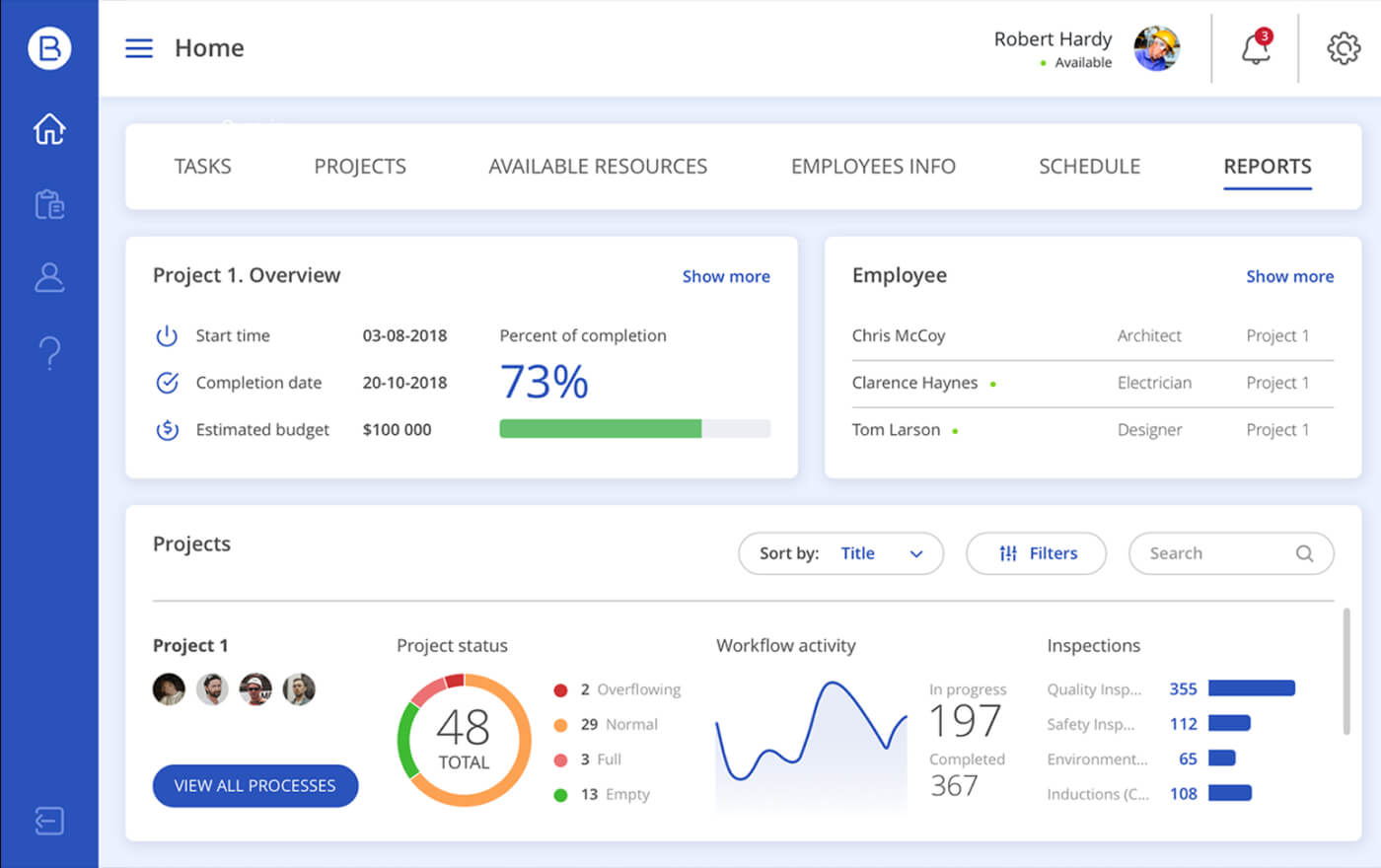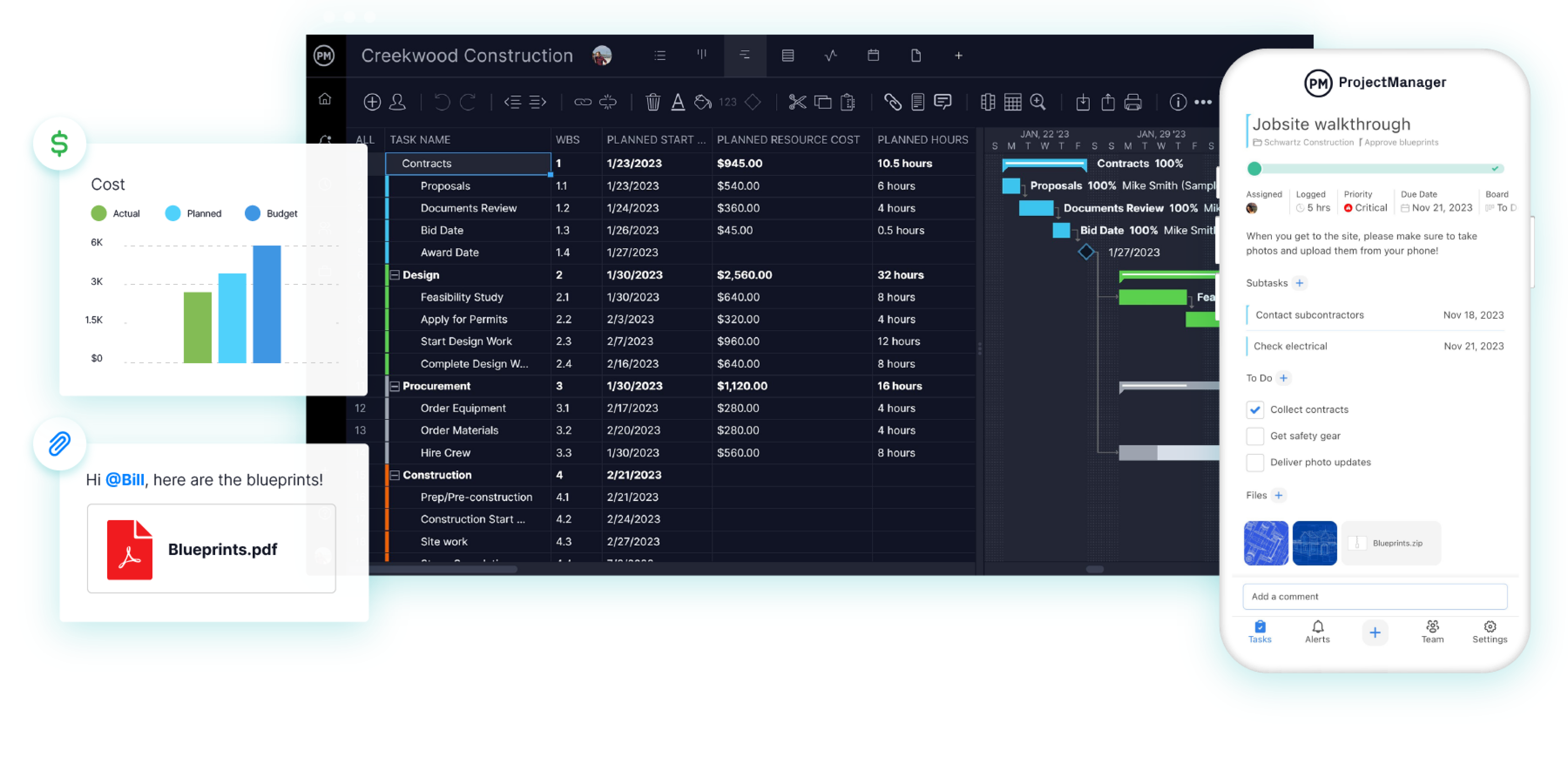Evolve Construction: Revolutionizing Project Management in the Market
Evolve Construction: Revolutionizing Project Management in the Market
Blog Article
Tailored Building And Construction Administration Software: Optimizing Resource Appropriation and Budgeting Methods
In the realm of modern-day construction management, the significance of tailored software program remedies can not be overstated. These innovative tools offer a nuanced method to optimizing resource allocation and budgeting strategies, important elements for successful project implementation. By diving into the ins and outs of just how such software program can enhance resource allotment methods and improve budget plan optimization methods, a clear pathway towards heightened task effectiveness emerges. In this digital age where accuracy and efficiency power supreme, exploring the impact of tailored building management software on these important elements reveals a realm of possibilities that might shape the future of the sector.
Advantages of Tailored Software Application Solutions
Customized software application options supply a myriad of benefits to building and construction administration firms looking for to boost effectiveness and streamline procedures. By customizing software program solutions to resolve task management, scheduling, budgeting, and source allocation, companies can enhance their operations and accomplish better performance.
An additional benefit of tailored software options is the capability to provide real-time insights and analytics. Building and construction management companies can take advantage of data-driven decision-making to monitor task development, recognize traffic jams, and make modifications quickly. This proactive technique enhances task results and helps companies remain on track with timelines and budget plans.

Boosted Resource Allotment Approaches
Applying efficient resource allowance methods is critical for building management companies to enhance job end results and make the most of performance. Enhanced resource allotment techniques entail purposefully assigning personnel, devices, and materials to details jobs to make certain optimum usage of resources. One essential aspect of enhanced source allocation is the capacity to properly forecast project requirements and allocate resources appropriately. By leveraging building management software that supplies real-time monitoring and reporting features, companies can dynamically change allowances as project needs advance, bring about boosted efficiency and cost-effectiveness.
In addition, improved resource allowance techniques make it possible for building companies to determine and address possible bottlenecks or resource restrictions proactively. By performing normal analyses of resource utilization and performance metrics, managers can make data-driven choices to rearrange sources efficiently and stop hold-ups. This aggressive approach not only enhances task timelines yet additionally lessens the risk of budget overruns due to inefficient source appropriation.
Spending Plan Optimization Strategies
To achieve like it optimum monetary performance in building and construction projects, efficient budget plan optimization techniques play a crucial function in making sure cost control and task success. One essential method is the establishment of a thorough job spending plan that allots resources based on concern and essential demands. By clearly defining the extent of job, setting reasonable expense price quotes, and constantly tracking costs, building supervisors can recognize prospective expense overruns beforehand and take corrective actions. Additionally, implementing worth design techniques can aid improve job expenses without jeopardizing high quality. This includes analyzing each job part to identify possibilities for price financial savings while preserving efficiency criteria. Leveraging historic information and market standards makes it possible for building supervisors to make informed choices regarding spending plan appropriations and recognize locations where investing can be optimized. By integrating these spending plan optimization techniques right into building and construction monitoring software program, job stakeholders can improve monetary planning, resource allocation, and overall budget management to drive task success and productivity.

Effect On Task Effectiveness
Maximizing building administration software can significantly improve project effectiveness by streamlining communication, boosting collaboration, and assisting in data-driven sites decision-making. By streamlining job information, stakeholders can conveniently access real-time updates, minimizing delays caused by miscommunication or obsolete information. Boosted cooperation attributes enable team members to interact perfectly, no matter of their physical place, fostering a much more cohesive and productive workplace. Additionally, construction administration software application can supply valuable insights via information analytics, permitting task managers to make enlightened choices rapidly and precisely.
In addition, the automation of routine jobs such as organizing, spending plan monitoring, and source allowance can free up useful time for task teams to concentrate on important activities, ultimately quickening project shipment. The capability to check task development in real-time and recognize prospective bottlenecks enables positive analytical, protecting against concerns from escalating and causing hold-ups. In general, the influence of customized construction management software program on project performance is indisputable, offering an affordable advantage by maximizing workflows and making best use of productivity.
Future Trends in Construction Software Application
As the construction industry proceeds to advance, advancements in modern technology are forming the future landscape of building and construction software options. One considerable pattern imminent is the increasing combination of expert system (AI) and artificial intelligence capacities in building and construction software program. These he said modern technologies have the prospective to revolutionize exactly how building tasks are taken care of by allowing anticipating analytics, automated decision-making processes, and enhanced job insights.
Another future pattern in building and construction software is the growing emphasis on cloud-based options. Cloud modern technology supplies raised versatility, scalability, and accessibility for construction groups, enabling real-time cooperation and data sharing throughout task stakeholders. This change in the direction of cloud-based software program is expected to boost job effectiveness, streamline communication, and improve total task outcomes.
In addition, the surge of Building Info Modeling (BIM) is anticipated to continue forming the building software program landscape. BIM software helps with 3D modeling, visualization, and data administration, resulting in improved task sychronisation, reduced errors, and boosted task outcomes. Accepting these future patterns in construction software will be crucial for firms looking to stay competitive and drive development in the industry.
Final Thought
In conclusion, tailored building and construction administration software application uses various benefits such as enhanced source allocation methods and spending plan optimization techniques. This software program has a significant influence on job efficiency by improving processes and boosting general efficiency (evolve construction). As modern technology proceeds to development, future fads in building software program are expected to further enhance source allowance and budgeting approaches for building and construction jobs
Report this page